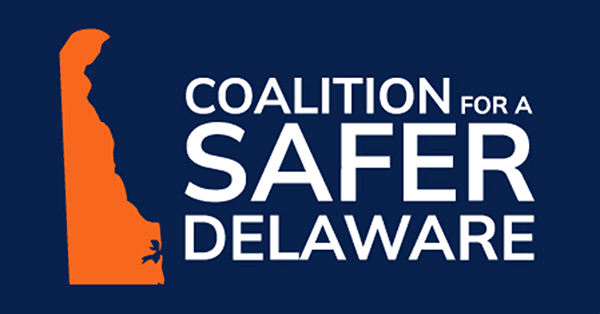Yes, Gun Violence and Domestic Violence Are Linked
Traci Murphy, Executive Director of Coalition for a Safer Delaware
Last week, I was a guest on a student-run podcast produced by The Cause, a terrific year-round video production club and service-based program for youth. The students were engaged, interested in learning more about gun violence prevention, and excited to continue their journey as young advocates. After the podcast was recorded, one of the students - I am guessing she is in 8th or 9th grade - told me that the topic was particularly meaningful because she had lost friends to gun violence. I offered my condolences - I can’t imagine that loss for someone so young, although data tells us it is more common than many of us realize.
She elaborated: they were sisters, shot and killed by their father in a domestic violence tragedy.
It’s a story we know too well. Gun violence and domestic violence are inextricably linked — when firearms are present, domestic violence is much more likely to end in death. A few fast facts:
- An abusive partner’s access to a firearm is a serious threat to victims of domestic violence, making it five times more likely that a woman will be killed.
- Domestic violence assaults involving a gun are 12 times more likely to result in death than those involving other weapons or bodily force.
- With our high rates of domestic violence-related gun violence, the U.S. is the most dangerous country in the developed world when it comes to women and guns. Women in the U.S. are 21 times more likely to be killed with a gun than women in other high-income countries.
The data is staggering - and also severely underrepresents the magnitude of this crisis. Even when a gun is never discharged, abusers often use the mere presence - or even the suggestion - of a firearm to intimidate, control, coerce, threaten, and injure intimate partners.
But, policy solutions exist. Gun laws save lives. And gun safety laws that address domestic violence specifically have ripple impacts more broadly in communities, particularly in preventing mass shootings.
For example:
- Researchers found that in 68.2% of mass shootings from 2014-2019, the perpetrator either killed family or intimate partners or the shooter had a history of domestic violence.
- A 2019 study found that, in the three years leading up to an intimate partner homicide, police were in contact with female victims related to domestic violence in 91% of the cases.
- Research shows that there is a 23% reduction in rates of intimate partner homicide when individuals convicted of nonspecific violent misdemeanors — not misdemeanors related to domestic violence — are prohibited from accessing firearms
And, despite opposition from a vocal minority, gun laws are constitutional: Recently, the Supreme Court of the United States upheld the federal statute prohibiting individuals subject to domestic violence protective orders from possessing firearms.
One of the policy lanes where DV and GV most strongly intersect is in “red flag” or ERPO laws. In Delaware, we have LVPO — which stands for Lethal Violence Protective Order. LVPOs are civil orders that exist to put time and distance between a person in crisis and a firearm. They are most commonly used currently by law enforcement, who can serve emergency orders and then the firearm owner can petition the court directly for the weapon to be returned. If the order is upheld, the owner can request the return of the firearm one year later.
However, we know that ERPO laws in other states are used in a more preventive fashion. Data reported above suggests that violent misdemeanors are an early indicator of a future DV incident — so can LVPOs be enacted as a part of a violent misdemeanor processing? And if so, what is the process involved with that undertaking - the training, the evaluation of policy, and the enforcement of order service? Clearly, more can be done — and must be done — to prevent domestic violence and gun violence. Is this the next step?
In the meantime, we will continue to advocate for effective, common-sense, evidence-based policies. Please join us for our upcoming Advocacy Day, where partners will come together to raise our voices together.





